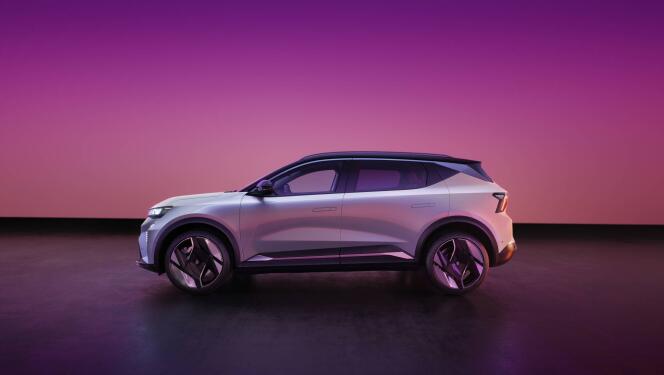Reinvent the R5 and the R4, electrify the Megane, rejuvenate the Espace, without forgetting to overhaul the Twingo. Renault is turning back the course of its history to reconquer its lost positions and once again become a general manufacturer that counts. This time, it is the Scenic which is the subject of a complete reinterpretation. A model born in 1996 and which was one of the most innovative of the brand, before being marginalized by the decline of the minivan, which fell into disuse with the advent of the SUV.
Despite this tarnished image, the manufacturer chose Scenic as the baptismal name for its first all-electric family vehicle. This avoids investing in a costly quest for notoriety and allows us to remember the former owners of this model, the first three generations of which enjoyed great commercial success. Like its predecessors, the fifth Scenic of the name is derived from the Megane sedan – which has since switched to electric traction and is E-Tech –, with which it shares the same platform intended for non-thermal models.
Designed with an eye for detail, but without pomp, the Scenic E-Tech is not the type to immediately provoke an irrepressible crush. Its shapes are calm, soft without being flat, and it exudes a certain personality, even if its rival, the Peugeot e-3008, with which it can finally be compared, plays it more SUV. To find its place in an increasingly contested compact electric family segment (Tesla Model Y, Volkswagen ID.4, BMW iX1, Volvo EX30), the new Scenic advances its strengths without trying to add to them. Renault is aware that the reconquest operation requires not skipping steps and that cultivating or even overplaying modesty has, in recent times, not been so successful.
Lower weight than most competitors
For an electric car that aims to serve as the primary vehicle in the home, credibility requires autonomy. On this level, the manufacturer has not skimped by offering, alongside the basic version (60 kilowatt hours, kWh), a high capacity battery (87 kWh) which ensures, on paper, a range of 625 kilometers (compared to 430 kilometers for the other proposal). Is this really reasonable? Said batteries, while waiting to be produced in France, come from Poland, where the energy mix is hardly carbon-free. In addition, the network of ultra-fast charging stations is now sufficiently meshed to contemplate long journeys with peace of mind without having to weigh down an 87 kW battery weighing 515 kg.
You have 42.89% of this article left to read. The rest is reserved for subscribers.
